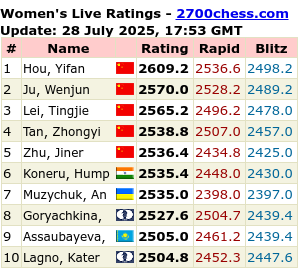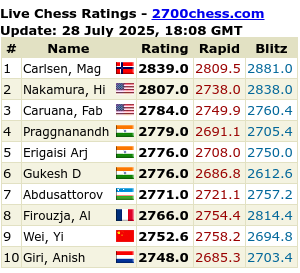 FORK
FORKGoring Gambit
1. e4 e5
2. Nf3 Nc6
3. d4 exd4
4. c3 dxc3
5. Nxc3 Bc5
6. Bc4 d6
7. Qb3 Qd7
8. Nd5 Na5
WHITE TO MOVE
Scenario : Black's last move may look good, for it double-attacks White's Queen and c4-Bishop. But Black has two vulnerable points: the unguarded a5-Knight and g7-pawn. White answers 9. Qc3!, menacing both captures. Black must save his Knight, 9....Nxc4, Qxg7. After 10....Qg4 11. Qxh8 Qxg2 12. Qxg8+ Qxg8 13. Nf6+, White soon emerges the exchange ahead.
Interpretation: Black plays 8....Na5, wishing to trade pieces, for he is a pawn ahead. When up in material, do exchange pieces to emphasize your advantage and to reduce the possibility of counterattack. The fewer pieces your opponent has, the harder it is for him to develop attacking compensation. The reasoning in playing 8.....Na5 is sound, but it places a Knight on an undefended square on the edge. And Black has an additional weakness at g7, which is no longer guarded by the dark-square Bishop, now outside the pawn chain at c5. Black's real error is that he's not ready for hand-to-hand combat; he's too undeveloped. Don't get into heavy fighting until your King is safe and your pieces are ready for action. The counterattack could kill you. "Then the Grasshopper knew it is best to prepare for days of necessity" --- Aesop.
(source: Chess Openings: Traps and Zaps by Bruce Pandolfini)






























No comments:
Post a Comment